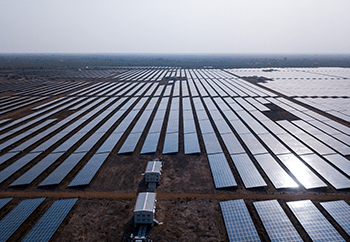TotalEnergies made a historic announcement of partnering with Adani Green Energy Limited (AGEL) to the next level with a new joint venture to develop over 1GW of solar energy in Gujarat, India. This collaboration is part of a broader strategy to boost renewable energy production in India and support global decarbonization efforts.
Unlocking TotalEnergies-Adani JV
This partnership will push Adani Green to develop t a new solar portfolio of 1,150 megawatt alternating current (MWac) in Khavda, Gujarat. Consequently, this initiative will strengthen their existing collaboration and support India’s renewable energy goals.
Notably, the electricity generated will be sold through Power Purchase Agreements (PPAs) with the Solar Energy Corporation of India (SECI) and on the open market. The project aligns with TotalEnergies’ strategy to capitalize on India’s evolving renewable electricity and natural gas market.
Speaking about the investment, TotalEnergies will invest $444 million with a 19.7% stake in the JV, while Adani Green will contribute assets. Currently, AGEL has 11 GW of solar and wind capacity across India and aims to reach 50 GW by 2030.
Adani’s energy portfolio as per 2023 sustainability report
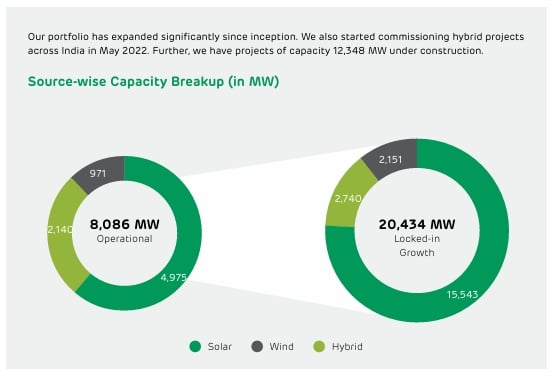 Source: Adani
Source: Adani
With More Power Comes More Investments
TotalEnergies is investing significantly in renewable energy and low-carbon solutions. This investment is a testament to this ambitious goal of expanding its electricity generation from renewable sources like wind, solar, bioenergy, and hydropower. In addition, it is also investing in low-carbon mobility infrastructure, including EV charging stations and hydrogen filling stations. It’s current energy portfolio looks like this:
- Gross installed capacity of 22 GW for renewable electricity by the end of 2023.
- Aims to exceed 100 TWh of net electricity production by 2030 and expand its renewable electricity capacity to 35 GW by 2025.
In 2023, the company invested $16.8 billion, allocating 35% of that amount to low-carbon energy. By the end of this year, it aims to invest $17-18 billion, including $5 billion for its growing Integrated Power segment. This commitment highlights the company’s shift to sustainable energy and its efforts to cut carbon emissions while staying profitable.
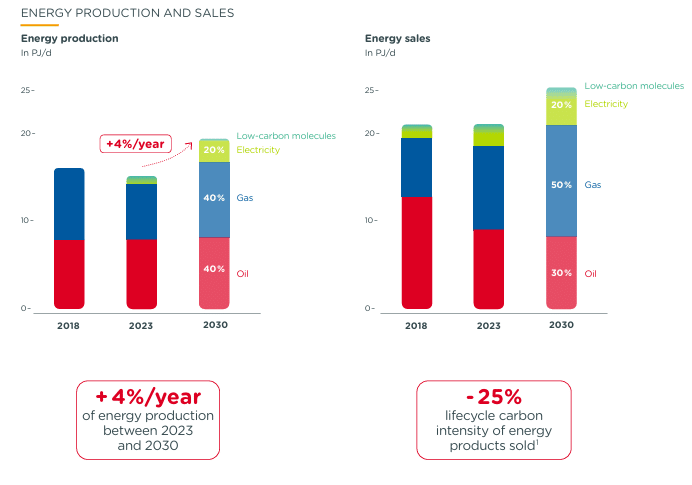
source: TotalEnergies
TotalEnergies Emissions Reduction Strategy
TotalEnergies is committed to the Paris Agreement’s goal of keeping global temperature rise “well below 2°C.” Thus, the company evaluates every new project for profitability and most importantly its impact on scope 1 and 2 emissions.
Scope 1+2 emissions for new oil and gas projects:
- Compared to the average emissions intensity of upstream production or downstream units (like LNG plants or refineries).
- As of 2024, the threshold has been lowered to 18 kg CO2e/boe (from 19 kg CO2e/boe), showcasing the company’s progress in reducing emissions.
Concisely, its net zero road map entails making 3x renewable energy, 2x energy efficiency and cutting methane emissions by 2030.
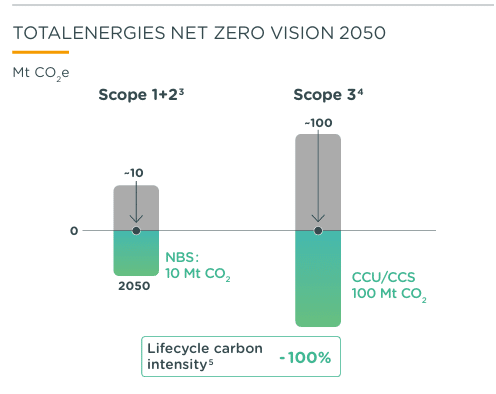
source: TotalEnergies
Adani’s Vision for a Net Zero Future
Their partnership dates back to September 2023, when both companies signed a binding agreement for the joint venture.
The portfolio included 1,050 MW, with 300 MW already operational, 500 MW under construction, and 250 MW in development. At that time, TotalEnergies invested $300 million in Adani Green, acquiring a 50% stake in the solar and wind projects.
The press release further reveals that this project in Khavda is part of Adani’s larger ambition to develop the world’s largest renewable energy site, which will span 538 km² and generate 30 GW of power once fully operational. With robust efforts and investments, the energy giant will turn Khavda into a key landmark on India’s net zero path.
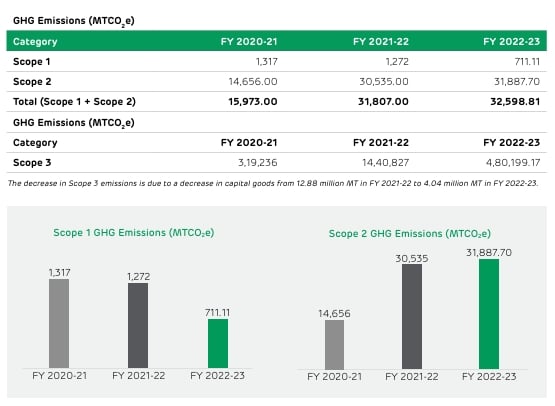
source: Adani
Thus, we can see that Adani’s every move aligns with the country’s decarbonization efforts. With this goal intact, they mitigated 36.7 MT of CO2 and generated 3.9 million carbon credits in the previous financial year. Overall, TotalEnergies, recognizing India as a key market for its renewable and natural gas ventures, will play a significant role in Adani’s mammoth energy expansion plan.

